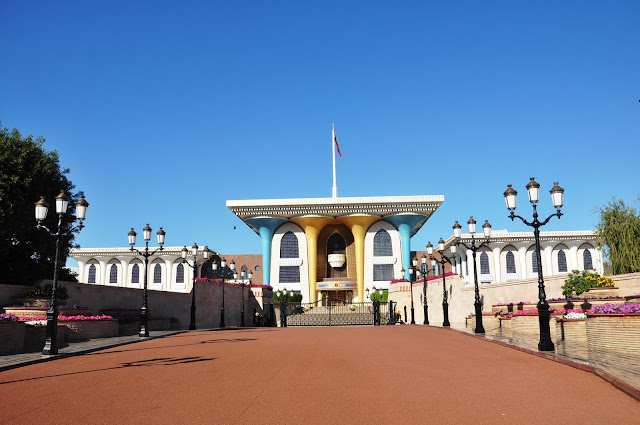After hitting the mountains, I decided to have a rest at Sur, a nice coastal town, where I stayed with a wonderful Tunisian family which I met in Couchsurfing, a web I didn’t use since 2016 when I went to South Korea. Maybe there were not many activities during these days, but I really enjoyed with my hosts, talking, playing guitar and celebrating New Year Eve.
One of the most famous thing in Sur is the traditional shipyard industry, There is a small museum, near to the suspension bridge in Al Ayjah area, where you can see how they build the ships, called dhows. These boats have been used during centuries for both freight transport and fishing, and they have being built till now.
Crossing the above mentioned bridge it is possible to access to the oldest and most picturesque part of the city. It is here where you can fin the lighthouse, one of the most iconic places in Sur. But, if you want to enjoy the best views, you need to go up to the Al Ayjah tower, where you can observe entirely this are which, in somehow, reminded of Cadiz, a lovely town in the South of Spain.
From Sur it is possible to plan excursions towards other interesting spots. A very recommendable place is Wadi Shab, only a 45 minutes drive. It is one of the wadi (Arabic Word which can be translated as “valley” or “canyon” in English) most fascinating in Oman and one of the best places I visited during my whole trip. The whole route can take about two hours, although the usual thing is staying longer, especially in the ponds of blue turquoise water, where you can enjoy a nice bath. Till this part, there is a relatively easy trail between the cliffs, through narrow paths and rocks which, in some parts can be a bit slippery, so you should bring appropriate shoes.
After leaving Sur, I came back Muscat where I spent my last days together with my friendo Arturas and his family, talking about the trip and how was life in Oman for them. According what I heard, I think they looked quite comfortable and they didn’t feel like yet to return to the cold Lithuania. Actually I would like to live for some time there but, for better or for worse, I am again here in Kuwait which, in spite of adapting to some annoyances, I don’t see as a suitable place for living. Anyway, the return was not so traumatic and it was easy to get used again to the usual life. However, I would lie if I say I didn’t sigh every time I ended a post about Oman during this last month. I will come back whenever I can.










































